by Sam Tackeff | Nov 14, 2011 | Baking, Cookies
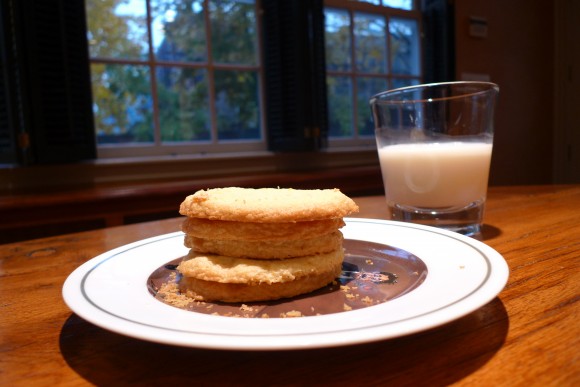
Life Philosophy #734: If not for yourself, bake for others.
I haven’t been baking enough. It’s been a strained relationship with my oven, and the poor appliance has been complaining of neglect.
And worse, I’ve been denying myself of something I really enjoy. I love mixing and stirring and folding and spreading batter in a tin. I love that you can’t tinker forever with your baking – you do the work, pop it in the oven, and then you are done and you must pray and wait.
The real problem is that when I bake, I eat. Ah, but moderation, you say! It’s as simple as moderation! Well, frankly, I’m not very good at moderation. When I bake, I eat and eat and eat, until I’ve finished the entire batch of cookies over a period of an afternoon. Sometimes, I’ll alternate cookies with bites of cheddar to get that elusive sweet and salty combination. Or I rationalize bundt cake for both breakfast and afternoon snack. When I bake, the line between treat and meal becomes blurred, and terrible things happen.
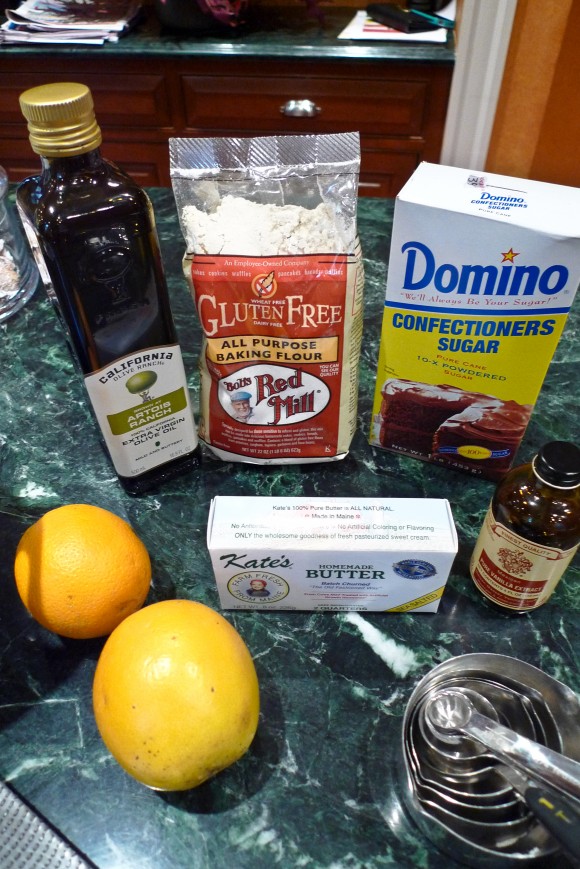
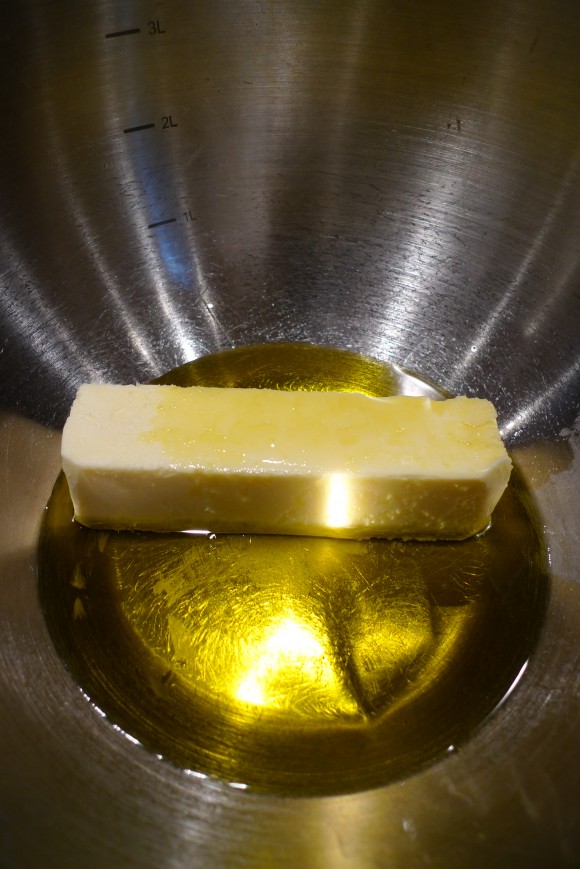
At some point in the past several years, I gave up my love of baking to pursue more health conscious pursuits. Now, instead of cookies, my oven is used for braising or heating up a single frozen biscuit, or maybe some Trader Joe’s Naan. On good days, I may bake an apple and at least get the satisfaction of the smell of warming cinnamon. This restriction has been good for keeping myself on the right track (calorically speaking), but I’ve suffered emotionally. I miss the calming effect of baking, the sweet smells in the kitchen, and the satisfaction when things turn out right.
So with holidays around the corner, and the potential for winter doldrums, I’m going to be back peeking in at rising cookies, cakes, and breads. And I’m just going to give most of what I bake away. If you are a committed eater, let me know, and we can work something out.

I think my plan has been working out pretty splendidly. Last week I made Pumpkin Chocolate Chip Cake. It’s my absolute favorite recipe in the world. I divided the batch into two loaves, and sent one to my brother who is a sophomore at George Mason, the other I brought to Devon’s office in a sort of stealth cake-drop that made people really happy. (I snuck in and left the cake on his desk when they were out of the office). Instead of eating cake for days, I had one slice, and it was delicious.
This week, I decided to make cookies. It was good timing because Bob’s Red Mill and California Olive Ranch had just offered to send me some of their products to bake with. And lord knows I love free baking ingredients. Since I use both of these companies’ products regularly, this was a no brainer.
There are so many delightful things you can bake with olive oil. My favorite flavor pairing is olive oil with citrus. There is something about the sweet citrus that stands up nicely to the sort of spicy, fruitiness of the oil. (This works well in salads, too.) And then you can take the combination a step further, and add almonds, or polenta.
One of my favorite cakes is a recipe from Claudia Roden, made with whole oranges, almonds and olive oil. I’ve love Gina DePalma’s Olive Oil and Polenta Cake, and am desperate to try Niahm Shields’ recipe for ‘little polenta, almond, and blood orange cakes’ in her new book ‘Comfort and Spice‘.
But, this week, instead of a cake (that I’d likely consume in its entirety), I opted to boost my classic shortbread recipe, and play around with citrus, olive oil and polenta. And then do a second round, gluten free. These cookies remind me of Italy, and christmas, and happiness in winter.
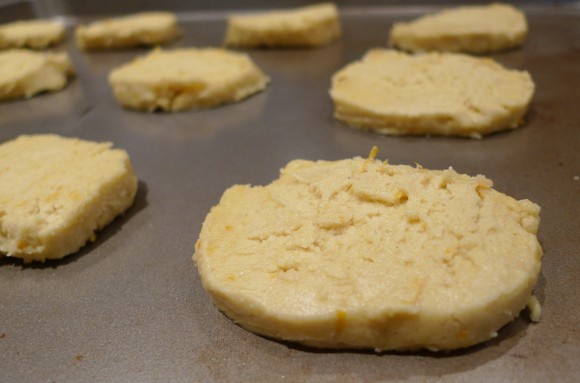
Orange Olive Oil Shortbread
Makes about 2 dozen
I actually made two separate batches of this cookie. The first I used 1 1/2 cups regular AP flour and 1/2 cup cornmeal (polenta) and it resulted in a satisfying crunchy cookie. The second go around I used 2 cups of Bob’s Gluten-Free All Purpose Baking Flour, and omitted the cornmeal. I wanted to see if I could do a good GF version, and was happy to find that it worked out well! The gluten free version was lighter and crispier, but both were pretty splendid.
About the olive oil – you can actually use a pretty robust olive oil, and you’ll get a nice grassy, fruity undertone. Or, if you’d like to tone the olive back a little bit, you can use a more mild and buttery oil. California Olive Ranch sent over the Artois Ranch, which was more mellow for baking, but I’ve also used their Everyday Extra Virgin with great success in cookies.
2 cups all purpose flour (or 1.5 cups + 1/2 cup cornmeal)
a pinch of kosher salt
1 stick unsalted butter, softened
1/2 cup olive oil
1/2 cup powdered sugar
1/2 teaspoon vanilla extract
zest of a small fragrant orange
1. In a bowl, mix flour, cornmeal (if using) and salt, and set aside.
2. In the bowl of a mixer, add olive oil, softened butter and sugar, and beat on medium speed just until just smooth, about 2 minutes. Add vanilla extract, and orange zest, and beat until combined. Set speed of mixer to low. Slowly add flour mixture to the mixer, and beat on a low speed until blended and just coming together. This will be a moist and airy dough, but will firm up enough to cut when put in the freezer.
3. On a piece of parchment on top of a piece of tin foil, form dough into a log and roll up (like a burrito); freeze 1 hour (or up to a month). 10 minutes before taking the dough out of the freezer, preheat the oven to 350 degrees Fahrenheit.
4. Remove shortbread from the freezer and remove parchment. Slice logs into 1/4-inch-thick rounds, and space about 1 inch apart on baking sheets. Bake in the preheated oven until the edges are just slightly golden, about 12 minutes. Let cool to room temperature. (Cooling both allows the cookies to firm up so that they don’t fall apart, and will also help you to avoid burning your mouth on 350 degree butter.)
Cookies can be stored in an airtight container for up to 1 week, but believe me, they won’t last this long. They are also freezable, for up to a month. The bonus when you freeze them is that the butter in the cookie firms up slightly. They taste pretty fantastic frozen, if you ask me.
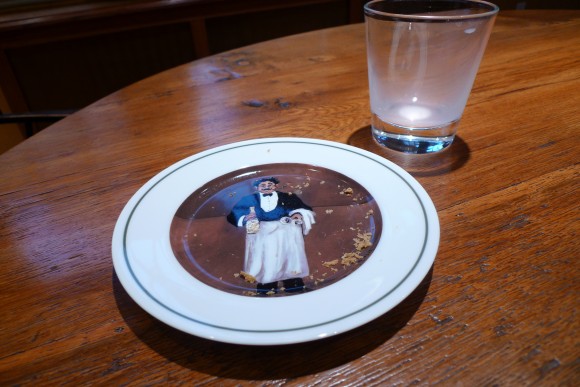
I received complimentary products from Bob’s Red Mill and California Olive Ranch, which were used in the creation of this recipe.
by Sam Tackeff | Oct 25, 2011 | Baking
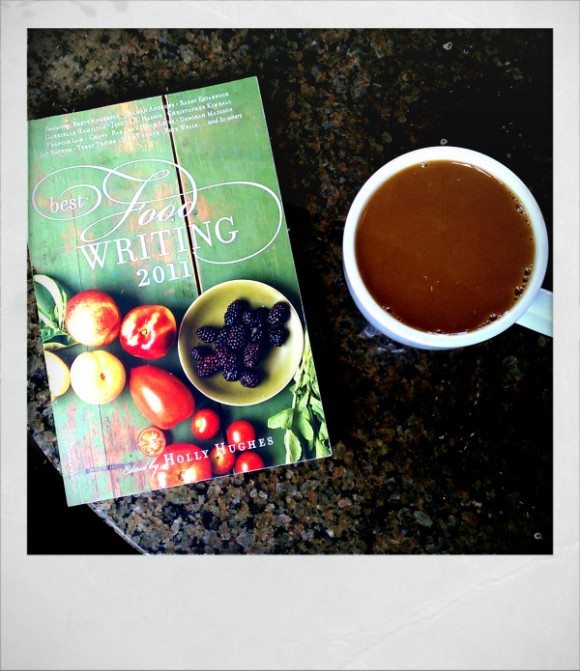
Every morning I wake up and head to the kitchen to put the kettle on. I’m not sure when coffee became part of my morning routine – sometime after I graduated college and settled into my own first kitchen, perhaps – but it quickly became my favorite part of the day, a personal and quiet moment just for me.
I like coffee in the morning because it requires a little bit of careful attention to make a good cup, but nothing I can’t do while still groggy from my deep slumber. There are a bevy of contraptions to use – the coffee machine, the Mukka, the single dripper and filter, but lately I’ve been using my French Press. It makes more coffee than I need, but I get great satisfaction out of pushing down the plunger and separating the grinds from my magic liquid elixir.
There is also ritual in the type of drinking vessel and how you take your coffee. My mom drinks hers black, from the mugs she collects around the world from each city she visits. My dad likes his in the small grey San Francisco mug, with fat free half and half, and several packets of Splenda. I think he’d prefer cream and sugar, but he abstains. I have mugs for different moods: short, round and white with a curved handle, or brown with no handle and a rubber ring you can hold without burning your fingers. I take my coffee too, according to mood – sometimes black to taste the true flavor of the beans, more often with a splash of half and half, or on the days I feel like treating myself, mixed with heavy whipping cream.
Once the coffee is done, I sit down with my mug and a book and begin my morning. Right now my wake-up literature is Best Food Writing 2011, thanks to the kind folks at Da Capo Press. I’ve been reading the collection backwards, and the first story I read, a short piece about Toast by Michael Procopio is in itself worth buying the book for.

On weekends, I sit down with my coffee and some breakfast and my computer, and attempt to plan out my week in food. Usually I surround myself with cookbooks as well, and create lists of breakfasts, lunches and dinners and a few good kitchen projects to get me excited about life.
This week I decided that my kitchen adventure was going to include coffee. This is problematic because I am in a committed relationship with someone who does not like coffee in the least bit, and is happily content living a life without. The only exception he makes is for ice cream, and it has been seasonally cold this week, so I wasn’t too keen on that idea.
But, then, I thought – a trick! What if I put the coffee in pudding? Devon loves pudding in all forms! If I put the coffee in the pudding, he will not be able to resist it. He will eat it even if he doesn’t love the taste, but will be happy because it is pudding, that sweet and creamy manna from heaven! I’m well aware that this logic is selfish, and not very loving, (and will make him grumble when he reads this) but you should see his face when he has just made himself a box of Dr. Oetker’s butterscotch. And home made pudding is always better.
I found a good recipe (see below) and adapted it: my first go around was a chocolate coffee pudding with Kahlua whipped cream. Then I made a second batch, adapting it once more: having tweaked my pudding technique, I made a riff on Turkish coffee – a straight coffee pudding scented with heady cardamom pods.
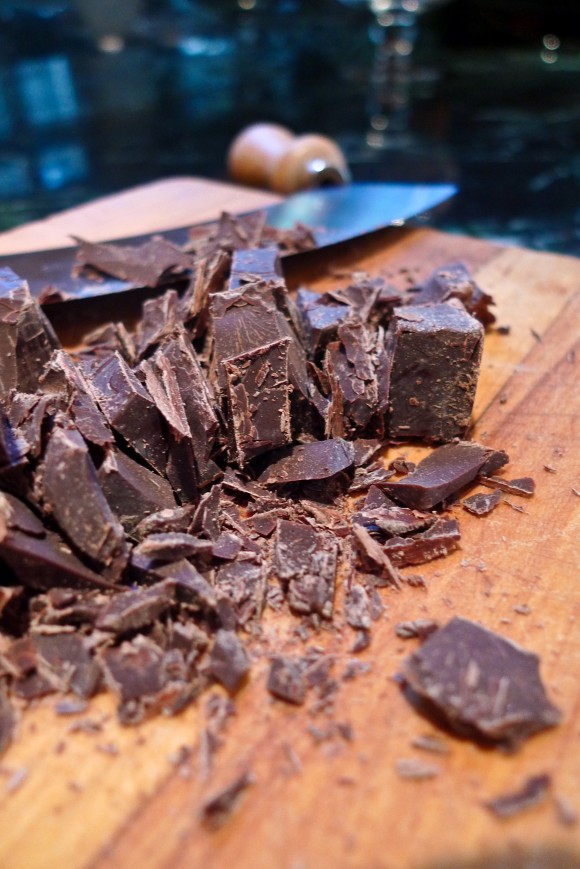
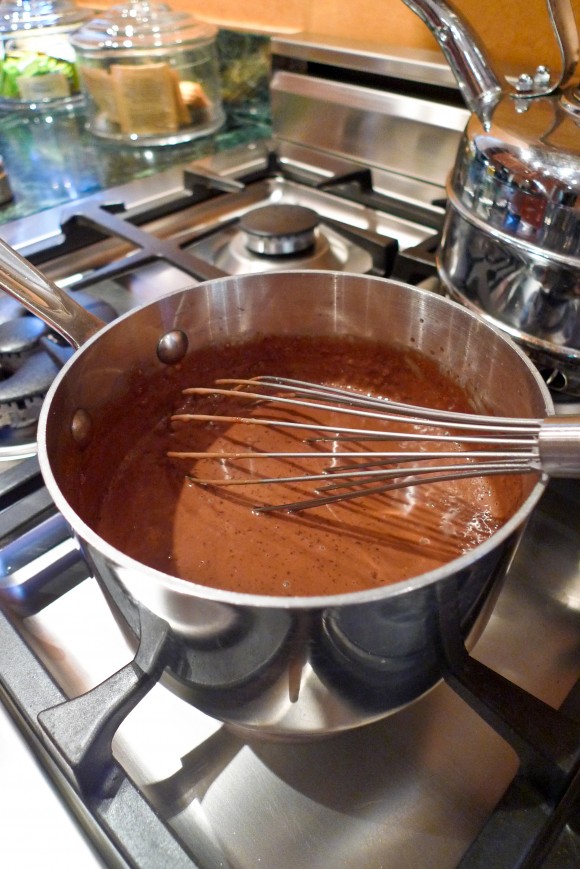
Chocolate Coffee Pudding
makes 4 small cups
(or 3 if you manage to eat a full ½ cup while cooking…)
I noticed this recipe for Coffee Pudding on Not Without Salt about a year ago. I bookmarked it, hoping for some excuse to make a batch. Last week I got a package of Peet’s coffee in the mail from the Foodbuzz tastemaker program, and decided that this was as good a time as any. I adapted it for my taste – a punch of chocolate for my sweet tooth.
1 ½ cups heavy cream (or half and half, but the cream makes it tasty!)
½ cup strongly brewed coffee (or espresso)
2 ounces really good quality semisweet or bittersweet chocolate, in pieces.
2 tablespoons cornstarch
2 tablespoons brown sugar
¼ teaspoon salt
1. In a saucepan over medium heat, stir the cream and the coffee, and the chocolate together with a wooden spoon until it comes to a simmer.
2. In a small bowl, stir together the cornstarch, salt and sugar. Whisk to remove the lumps. (I find a mini-whisk is really useful for this purpose!)
3. As soon as the cream and coffee mixture comes to a simmer, take a few tablespoons of the creamy liquid and add it to the cornstarch mixture to create a slurry; whisk well to combine. Then dump the (now wet) cornstarch slurry back into the warm cream and coffee. Bring to a boil for 1 minute as to activate the cornstarch.
4. If you are intent on the smoothest pudding, pour the pudding through a fine strainer to remove any lumps (I’m usually too lazy to do this). Spoon into four small pudding dishes (or two large coffee cups, if you want to be cute and gluttonous at the same time.) You can cover the surface with plastic wrap if you don’t like skin forming, but I do, so I just cover the cups loosely. Refrigerate until set, at least three hours. Serve with sweetened whipped cream.
Whipped cream note: to make whipped cream, use heavy cream and a little bit of sugar. You can flavor it with a capful of vanilla extract, or in this case, a little rum or even Kahlua works marvelously.
Variation – Coffee Cardamom Pudding: omit the chocolate, and use ¼ cup brown sugar. In the first step, steep 3-5 cardamom pods in the warming cream and coffee. Remove the cardamom when it comes to a simmer, and follow the recipe the same way.

by Sam Tackeff | Oct 13, 2011 | Dinner Parties
Isn’t Jacqueline Kennedy stunning in this photo? That fabulous dress, the pixie haircut and those perfect pearls? It just all seems so effortless.
Being social is something I have to work at. I’m not very good at it. So, I’ve been thinking a lot lately about how to be a better host. One of my dreams for my new home is to host calm little dinner parties for small groups of friends. The ones where you linger over glasses of wine, and stay up past your bedtime telling stories and giggling and feeling warm and cozy. I didn’t do enough of this in San Francisco – sometimes we were too busy or too tired, but too often because hosting makes me anxious.
So lately I’ve been tackling this problem the way I tackle most problems – writing up ridiculous lists in my Moleskin. This one made me chuckle when I looked back at it, so I thought I’d elaborate here. This should really be titled “8 Tips to Stop Being A Hermit, and Socialize, Mkay?” or “How to spend time with people, rather than your DVR”.
Here you go:
#1: Bring on the biscuits. A dinner party does not need to be six guests and a four course meal. A dinner party can be one guest, a meal on the floor. A dinner party can be boxes of Chinese take-out sitting cross legged. Or that ole’ standby, Popeye’s Chicken and Biscuits. You know you are a sucker for those biscuits.
#2: Being Social Good, Being Hermit Bad. It’s a little pathetic that I have to remind myself of this. In college, I liked to take advantage of every opportunity to share a bite to eat with friends. 5pm was cocktail hour with Lizzy, house council meetings had fresh focaccia, and there were always late-night ice cream runs. You’d never head to dining hall to eat a meal alone – the more the merrier.
#3: Channel a Host-Master. My current one is Chez Panisse chef David Tanis – with his underground Paris supper club “aux chiens lunatiques”. If he can invite total strangers over for a meal, I can invite a friend over without stress.
On this note, a few weeks ago, Tara Austen Weaver posted the beginning of a series on how to be a consummate host, in which she shares her ”hosting anxieties”, and interviews those who feel comfortable inviting in the masses. I’m looking forward to reading more of these.
#4: You are not alone, horrified host. My fears and anxieties are shared. There was a study a while back written up in the Telegraph that found that “57 per cent of people found entertaining friends for a meal more nerve-racking than commuting to work, while a quarter said it was more testing than a job interview.” Isn’t that ridiculous? This actually makes me feel a little relieved because I never feel that badly about hosting.
#5: Put away the Alinea Cookbook . I have a terrible habit of spending almost all of my time in the kitchen in experimentation mode. This means that most meals we eat at dinner are only at 75 – 85% of perfection because I’m always trying to fiddle. While it may be tempting for the masochist to pull out the professional cookbook for entertaining, there is no shame in having a good chili recipe that works every time.
#6: Just because your mother uses a set from Shreve’s, your silverware need not match. I’m currently boasting a set of five bowls from Crate and Barrel, white with aubergine inside. My set of “dinner” plates are ones I stole from our house in Maine, vintage green stoneware “snack” plates from the 1950’s with rimmed depressions for the cups that go with them. Literally, plates designed for sitting and eating in front of the television. In the future, I’d love to have a set of beautiful tableware, but as long as the plate is functional, it’ll be just fine.
#7: Put away the bleach, your house need not be sparkling clean. It will never be as clean as it needs to be. Just suck it up, and hope that your friends aren’t jerks.
#8: Stop being boring. See those blank spaces on your iCal? Fill them. You out there, fellow anxious hosts – I implore you, invite someone over next week. Even if it is just for tea, takeout, or a box of Annie’s Shells and Cheddar (although you can do better). The only thing you need to do to have a dinner party is invite someone, just one, and there you go. It is incredibly gratifying to feed people.
After writing out my little list, I felt comfortable enough to invite over my first house guest. Despite the fact that we have no table, one chair, and we are still in the process of painting the kitchen. I made this warm chicken stew, a salad, and strawberries macerated with a little liquor, and some fresh whipped cream. I think it worked out pretty well.
Chicken Cacciatore
serves 4 modestly
with a green salad and some crusty bread
This is one of my favorite recipes adapted from Nigella Lawson for Chicken Cacciatore – she’s a fabulous hostess herself. I’ve actually written about it before, here, but I’ve perked it up a bit. Her addition of beans gives the recipe a little bit more substance. It’s flexible too – you can do it with most pieces of chicken, whatever beans you have on hand, bacon or pancetta or even cubed ham. And, this is one of those nice dishes that you can cook in one pot, and even make in advance of your evening, as it almost always tastes better reheated the next day.
2 Tablespoons Extra Virgin Olive Oil
1 whole clove of garlic
1 white onion, sliced
1 teaspoon fresh rosemary (or 1/4 teaspoon dried)
2 thick strips of smoked applewood bacon, chopped into 1/2 inch pieces
4 whole chicken legs, bone in, with skin (about 2 pounds) or just thighs are fine
1/2 teaspoon celery seed
1/2 cup white wine (or sherry)
1/2 cup chicken stock or water
1 (14 ounce) can of chopped tomatoes
3 bay leaves
1/2 teaspoon sugar
1 (14 ounce) can of cannellini beans
1. Season the chicken with salt and freshly ground black pepper. (Preferably a few hours before if you can). Heat a heavy bottomed pot (I use my Le Creuset) on medium heat.
2. When hot, pour in the olive oil, swirl to coat the bottom of the pot, and place the chicken legs skin side down to brown, about 10 minutes. Turn and cook the other side for about 3 more minutes. Remove, and set aside.
3. Add the bacon and onion and stir until the onion is translucent, about five minutes. Add the whole clove of garlic, the rosemary and bay leaves, and cook for a minute or two, until fragrant.
4. Pour in the white wine, scraping the brown bits from the bottom of the pan (where your flavor is!) Add the can of tomatoes, chicken stock, cannelini beans, sugar, and celery salt. Put the chicken back into the pan, skin side up, cover, and braise for 45 minutes. Remove your bay leaves before serving, as so your guests don’t choke.













